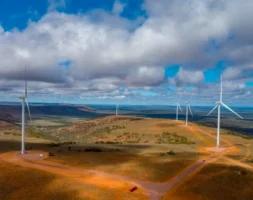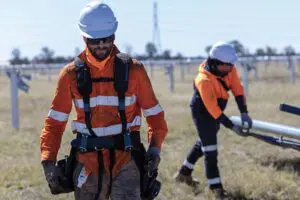This week I ventured outside my natural habitat and joined a panel at the Australian oil and gas industry conference to discuss if the industry has a role in a net zero emissions future.
It’s easy to just say a big fat no to this question, especially given the coal, oil and gas industry is largely responsible for global warming. The industry’s
There is also the fact that the fossil fuel industry knew about climate change for decades and failed to act. In fact, it knowingly made the problem worse.
But we won’t solve the climate crisis if we all sit in our corners throwing rocks at each other.
We will only solve the problem if we face it head on. And that means first facing the climate reality.
The first reality is that climate damage is here, now.
It’s here in the bleaching and devastation of the Great Barrier Reef. It’s here in the deadly bushfires that razed south-eastern Australia in the 2019-20 summer.
It’s here in heatwaves harming people, the death of a million fish in the Darling River, the burning of the usually wet forests of Tasmania and northern
With just 1.1 degree of global warming, Australia is a dangerous place.
The second reality is that we don’t have until 2050 to reach net zero. The Emissions Targets Panel at Melbourne University and the Climate Council has released research showing that net zero by 2050 is not aligned with a 1.5 or 2 degree goal.
Australia needs to slash emissions this decade and reach net zero by 2035 to have any chance of staying within 1.5 degrees.
The final reality is that continuing to mine and burn coal, gas and oil will pollute our climate and drive global warming.
We need to transition to clean energy and we need to do it this decade. There has never been a more important time in human history to invest in clean energy and technology.
The International Energy Agency agrees, stating that no new oil or gas field developments should be approved from this year. The next decade needs to see massive deployment of all available clean energy technologies like renewables,
So, does the oil and gas industry have a role in a net zero future?
The industry – its facilities, know-how and people – could play a greater role, but its product – fossil fuels – cannot.
It’s obvious to most people, except perhaps the politicians who continue to do the bidding of the fossil fuel industry, that coal, oil and gas are not part of a clean energy future. It’s simple really. When burnt they produce greenhouse gases that warm the planet and pose an existential threat to life on earth.
Some say carbon capture and storage will come to the rescue. It hasn’t yet, after decades and billions of dollars of
But oil and gas companies own and operate
The industry has smart people that know how to produce energy. There is no reason why that know-how could not be focused on clean energy.
It takes energy to make hydrogen. At the industry conference we debated whether that hydrogen should be green – produced from clean energy – or blue – produced from fossil fuels where the carbon emissions are captured and stored.
The jury is still out on this question, especially as CCS is still unproven at scale and very expensive as the cost of renewable energy plummets.
If I were the gas industry, I would be looking seriously at green hydrogen, especially as our major trading partners indicate their preference is for green.
There are other challenges. Making hydrogen requires lots of water and we live on a dry continent. Renewable energy needs to get to scale across the world. There are environmental impacts. No transition is easy.
That’s why we need a national climate plan for Australia and a net zero emissions target. If we face these challenges head on, we can find solutions. If we stick our heads in the sand, we get nowhere.
This May, CO2 levels recorded at Mauna Loa Observatory hit an all-time record high of 419 parts per million in the atmosphere. A safe level is 350 ppm. We have to solve this problem fast.
Climate impacts are accelerating, investor and shareholder concern is accelerating, the transition to renewables is accelerating. Courts are making landmark decisions and climate-conscious shareholders are getting seats on the boards of big oil and gas companies.
The oil and gas industry should heed the warning signs of a rapidly changing world.
Kodak invented the first digital camera but under-estimated the pace of change and dismissed the digital revolution. We all know what happened to Kodak.
Whether the oil and gas industry has a role to play in the net zero future is completely up to it. Companies that take climate change and the transition to clean energy seriously and do not underestimate the pace of change can be part of our energy future.
Debating this at the national conference
Kelly O’Shanassy is CEO, Australian Conservation Foundation










